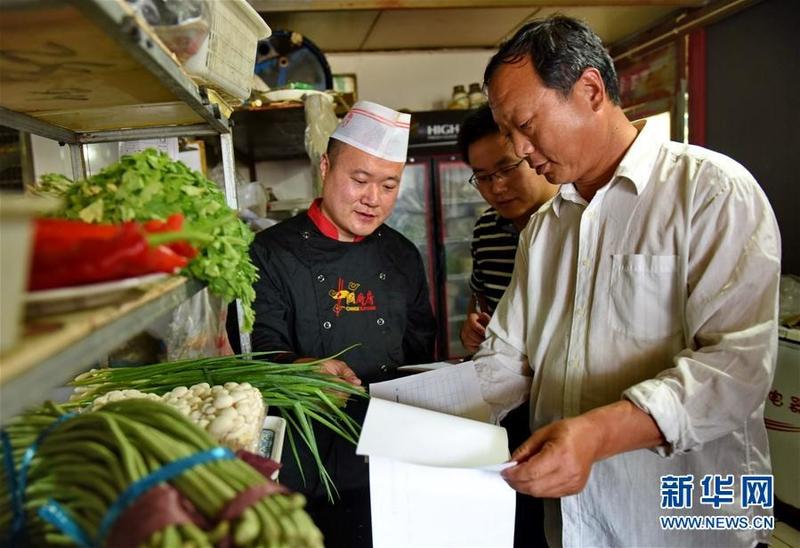 A coordinator checks a purchase record book in a restaurant of Weixian country, North China's Hebei province, to ensure food safety. (Yang Shiyao / Xinhua)
A coordinator checks a purchase record book in a restaurant of Weixian country, North China's Hebei province, to ensure food safety. (Yang Shiyao / Xinhua)
China's food safety has been improving in recent years, with the pass rate for food sampling inspection remaining above 97 percent for five consecutive years, officials said on Monday.
The overall food safety situation is on a positive trend, and no systematic or large-scale incidents have occurred in recent years, contributing to the safeguarding of the health of Chinese people, authorities said during an event on Monday kicking off a one-week campaign known as the China Food Safety Publicity Week.
Wang Tiehan, chief inspector of food safety at the State Administration for Market Regulation, said that market regulators across China conducted random inspections of about 2.37 million batches of food products from January to June, and found 59,400 of them containing substandard samples.
Wang noted that the failure rates for five categories of food that are consumed in large quantities-grain products, cooking oil, meat, fat and related products and dairy products-were all below the average rate of failure of 2.51 percent, and 27 types of food, including vegetables and alcohol, had registered lower failure rates than the same period of the previous year.
However, problems were more common among agricultural products and in the catering industry, such as excessive residues of pesticide and veterinary drugs, microbial contamination and the overuse of food additives in fried and fermented products.
Wang said market regulators had suspended the operations of manufacturers who had failed multiple inspections or revoked their certificates.
While toughening supervision over food safety issues, China has also upgraded food safety standards and enhanced monitoring of food-related risks in recent years.
Li Bin, vice-minister of the National Health Commission, said that since 2010, the commission has been consolidating and reorganizing a cumbersome set of nearly 5,000 food-related standards managed by 15 government organs.
So far, the commission has released 1,455 new entries in the national food safety standard, covering the full range of food production.
In the meantime, two national networks that monitor risks for food contamination and food-borne illnesses have been established. "These measures have enabled us to identify hidden food risks quickly and provide early precautions," he said.
Authorities said that China will continue to roll out measures to ensure food safety, including enhancing oversight over new models of business such as e-commerce and livestreaming sales, and adopting new technologies such as big data to enhance supervision capability.


